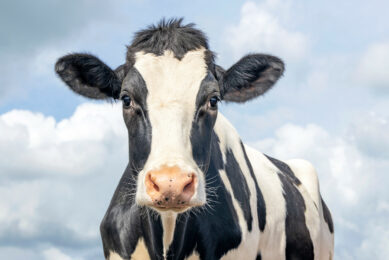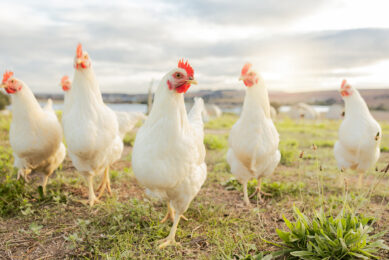Application of selenium yeast in improving pork quality

Adding selenium as an antioxidant to the diet of finishing pigs can effectively improve the performance of finishing pigs, improve the antioxidant capacity of finishing pigs and improve the quality of pork.
With the improvement of living standards, consumers put forward higher requirements for the quality of pork products. At present, there are many hidden dangers in the quality and safety of commercial pork, which are prone to pale, soft and exudative meat and dark, firm and dry meat.
Oxidative stress is a common stress in pig production, which can reduce the antioxidant capacity of fattening pigs, leading to the decline of performance, and is the key factor to the decline of meat quality. Selenium is an important component of glutathione peroxidase (GSH-Px) and selenoprotein in animals. Selenium also plays a significant role in the balance of REDOX, and as one of the essential trace elements in animals, it has positive effects on the immunity, growth and reproduction of pigs. Adding selenium as an antioxidant to the diet of finishing pigs can therefore improve the quality of pork.
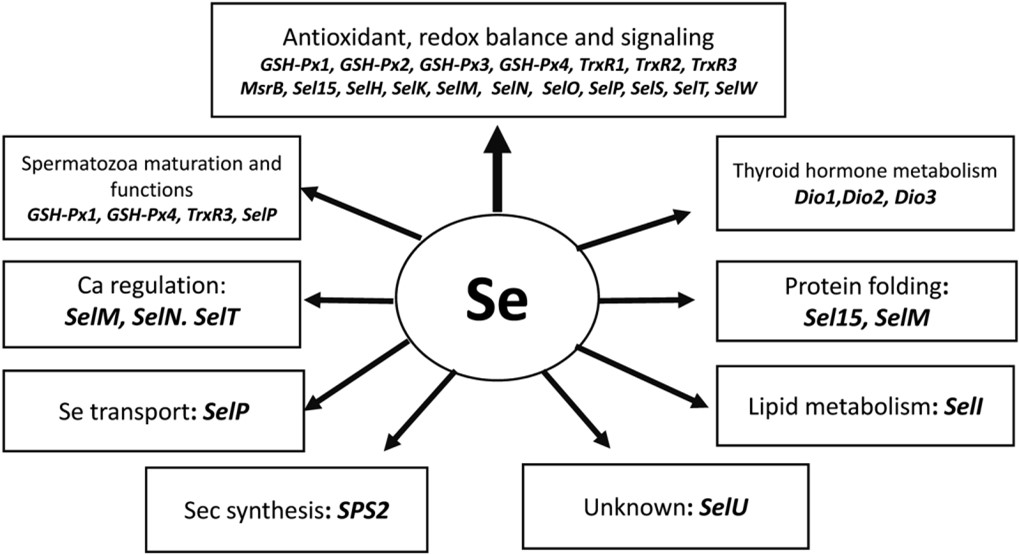
Selenium is mainly added to animal feed in the form of inorganic selenium and organic selenium, and the organic selenium mainly includes selenomethionine and yeast selenium.
Selenium supplement mainly comes from organic selenium (selenomethionine and selenocysteine) and inorganic selenium (selenate and selenite). The utilisation efficiency of organic selenium is higher than that of inorganic selenium, and it is non-toxic or low toxic. However, inorganic selenium (sodium selenite) has strong toxicity, low absorption rate and can potentially lead to pollution problems. The biological function of selenium is realised through the protein family of selenium proteins. Selenium in yeast selenium mainly exists in yeast protein in the form of selenomethionine and selenocysteine.
Metabolic pathways of selenium
The existence of selenium is different, and its digestion, absorption and metabolic pathways are different. As can be seen from Figure 2, inorganic selenium exists in the form of selenite (SeO32-) and selenate (SeO42-) in the intestinal lumen, and is then absorbed in the small intestine in the form of passive diffusion, and SeO42- is further degraded into SeO32- in the cell. It then reacts with reducing glutathione (GSH) to produce glutathione selenotrisulfide (Gs-Se-SG), only a small amount of which can eventually be degraded into selenide (HSe–) through transselenisation, which binds to plasma proteins and is transported to the liver to participate in the synthesis of selenoproteins.
Most of the HSe in inorganic selenium metabolism can be metabolised into methyl selenium (MSe) through methylation, and then converted into selenose. Therefore, most of the selenium that is not used for the synthesis of selenoproteins is finally excreted by lung respiration or fecal excretion.
Organic selenium exists in the intestinal lumen in the form of selenomethionine (SeMet) and selenocysteine (SeCys). As organic selenium has similar properties of sulfur-containing amino acids, it can be actively absorbed in the form of amino acids instead of sulfur-containing amino acids. SeMet can be converted into SeCys, and then SeCys is degraded into HSE through selenoconversion.
Hse-phospholipid Selenocysteyl tRNASec (SePhp) is synthesised with the participation of ATP, and then selenocysteyl tRNASec (Selenocysteyl tRNASec) is formed. Therefore, most selenium in organic selenium metabolism can enter the liver to participate in the synthesis of selenoprotein, which increases the storage amount of total selenium in tissues and provides a selenium reservoir for the body. This has a strong antioxidant effect. When organic selenium is added to the diet of animals, the content of selenium deposited in animals is higher than that of inorganic selenium.
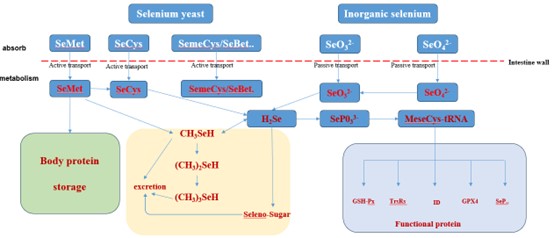
Angel Fubon Yeast selenium is a product with high organic selenium content, which is obtained by deep liquid fermentation of specially selected saccharomyces cerevisiae strains using the enrichment of trace element selenium by yeast. After meeting the physiological needs of animals for selenium, it can also be stored in animals to reduce emissions to the environment and maximise the supply of selenium when the body’s demand for selenium increases during disease stress, reproduction and embryonic growth.
Angel Yeast Co., Ltd. cooperated with the French National Testing Center to detect methionine selenium and cysteine selenium in Fubon yeast selenium produced by Angel company by plasma mass spectrometry. The content of the two kinds of organic selenium accounted for more than 80% of the total selenium content, and no inorganic selenium of +4 or +6 was found in yeast selenium. Compared with similar products in the world, the quality of Fubon yeast selenium products has reached the international leading level.
Physiological effects for fattening pigs
 Angel Yeast conducted an experiment exploring the effects of selenium yeast (YeaSel, commercial product for selenium yeast from Angel Yeast Co.) compared with inorganic selenium (control) on meat of fattening pigs. The animal trial last 4 weeks.
Angel Yeast conducted an experiment exploring the effects of selenium yeast (YeaSel, commercial product for selenium yeast from Angel Yeast Co.) compared with inorganic selenium (control) on meat of fattening pigs. The animal trial last 4 weeks. Growth performance of selenium yeast on fattening pigs
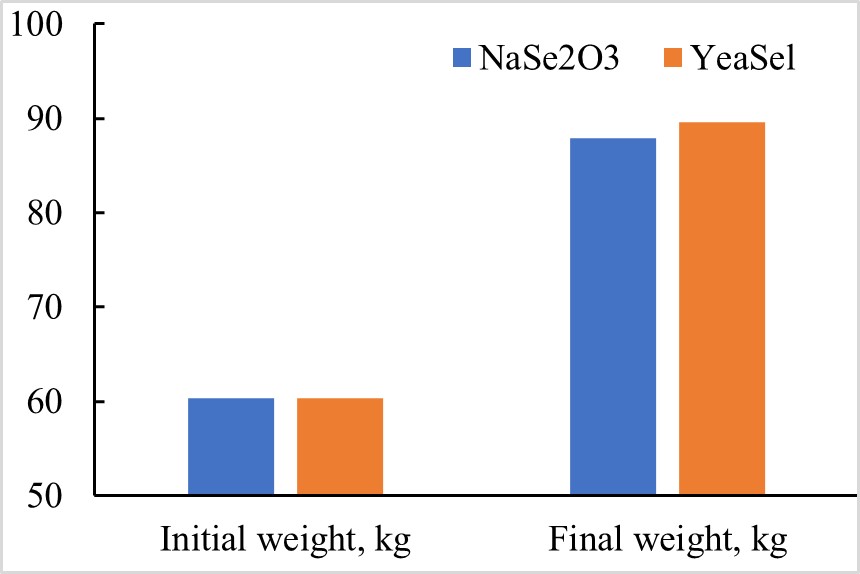 Compared with Sodium selenite (CON), yeast selenium (YeaSel) had no significant effects on final weight, ADG, ADFI and F/G of fattening pigs (P>0.05), but could slightly improve the performance of fattening pigs.
Compared with Sodium selenite (CON), yeast selenium (YeaSel) had no significant effects on final weight, ADG, ADFI and F/G of fattening pigs (P>0.05), but could slightly improve the performance of fattening pigs.Serum antioxidant index of selenium yeast on fattening pigs
The main physiological function of selenium is to participate in the synthesis of selenium proteins. Among them, glutathione peroxidase (GSH-Px), as an important selenium protein, can effectively remove hydrogen peroxide or lipid peroxides in the animal body, and avoid the damage caused by ROS.

A large number of studies have shown that compared with inorganic selenium, yeast selenium has more obvious antioxidant effect, can increase the activities of GSH-Px and T-SOD, and reduce the content of MDA. This study shows that there was no significant difference in T-SOD (P > 0.05) and MDA (P > 0.05) of fattening pigs with sodium selenite or YeaSel supplementation. However, compared with sodium selenite group, YeaSel group could significantly increase the content of GSH-Px in serum of fattening pigs (P < 0.05).
Selenium content in serum, liver and muscle of selenium yeast on fattening pigs
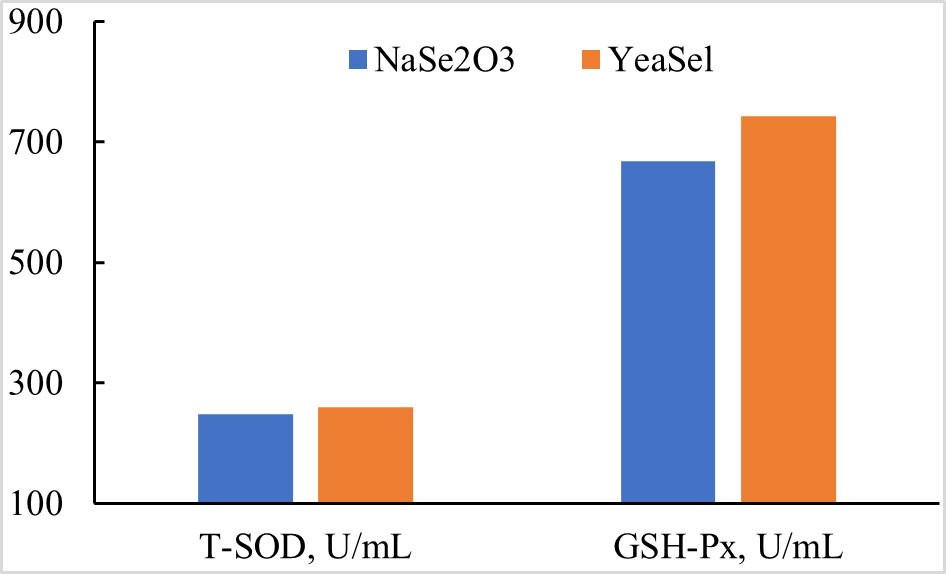 Selenium in sodium selenite is inorganic selenium, which is mainly absorbed in the small intestine by simple diffusion, and its absorption rate is about 50%~90%. Yeast selenium mainly exists in selenomethionine/selenocysteine and its derivatives, and is mainly absorbed into the blood by the small intestine through the Na+ dependent neutral amino acid transport system, and the absorption rate can reach more than 90% in monogastric animals.
Selenium in sodium selenite is inorganic selenium, which is mainly absorbed in the small intestine by simple diffusion, and its absorption rate is about 50%~90%. Yeast selenium mainly exists in selenomethionine/selenocysteine and its derivatives, and is mainly absorbed into the blood by the small intestine through the Na+ dependent neutral amino acid transport system, and the absorption rate can reach more than 90% in monogastric animals.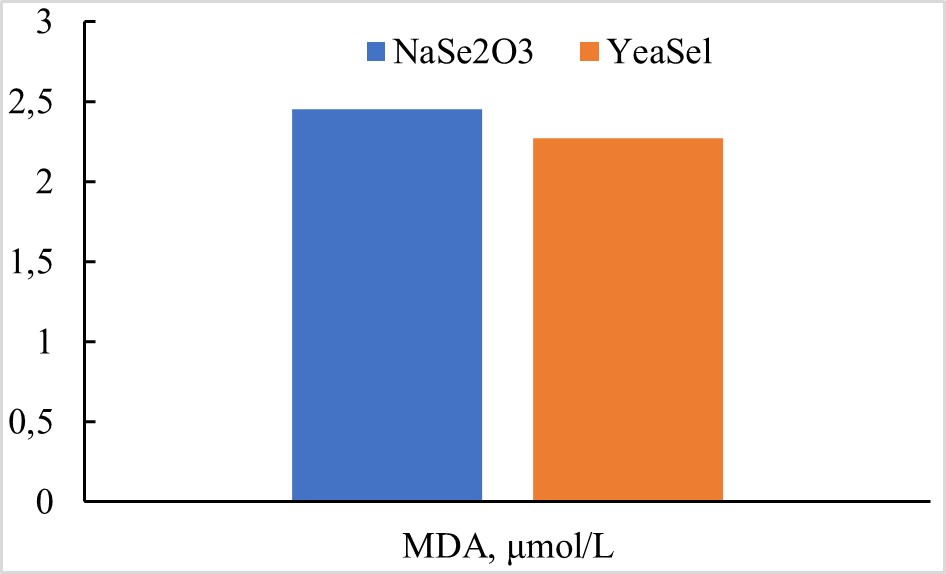
This study shows that the total selenium content in serum, liver and muscle of YeaSel group was significantly higher than that of sodium selenite group (CON) (P < 0.05).
Pork quality of selenium yeast on fattening pigs
Recently, Angel Yeast and Sichuan Agricultural University carried out experimental research and found in the experiment that the effect of different selenium sources (0.3 ppm) on the quality of fattening pork are different, and that the yeast selenium group could reduce the drip loss of meat quality by 12.6% compared to the inorganic selenium group.

Compared with the inorganic selenium group and the selenomethionine group, the YeaSel group could significantly improve meat aroma, tenderness and juiciness scores. Experiments show that yeast selenium can reduce drip loss to a certain extent, and can improve meat aroma, tenderness and juiciness.
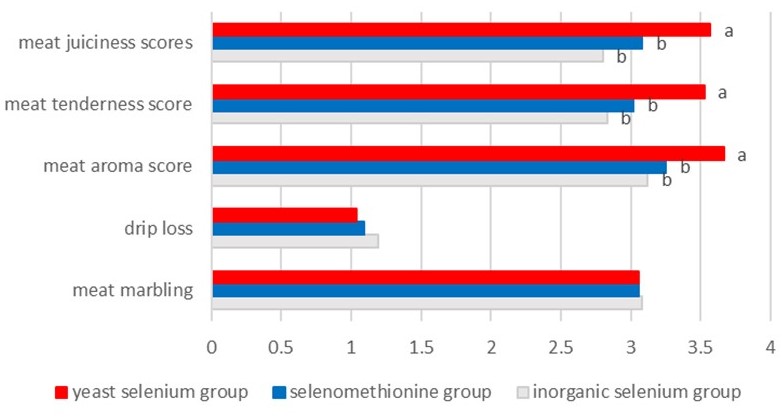
Data from the Institute of Animal Nutrition, Sichuan Agricultural University.
Usage
Taking YeaSel (2000 ppm) as an example, the amount added to the feed is shown in the table below. At the recommended dosage which is usually about 100~150g/t, adding yeast selenium to feed can improve the quality of meat products, improve reproductive performance, and relieve animal stress.




